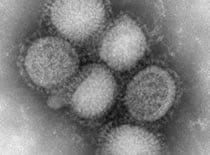 A further 17 suspected cases of swine flu have been detected at a primary school in Sheffield after a pupil was confirmed as having the disease.
A further 17 suspected cases of swine flu have been detected at a primary school in Sheffield after a pupil was confirmed as having the disease.
Lydgate Junior School announced on Friday that it would be closed next week after a pupil tested positive.
NHS Sheffield said a further 17 people, a mixture of pupils and staff, had displayed flu-like symptoms and that five of those were being tested.
The remaining 12 have been given anti-viral treatment, the spokeswoman added.
The school will be closed from Monday to Friday on the advice of the Health Protection Agency (HPA).
Other schools
The school was opened between 2000 BST and 2200 BST on Friday and 1000 BST and 1400 BST on Saturday to allow parents to collect medication.
Paul Redgrave, NHS Sheffield's deputy director of public health, said the nearby Lydgate Infant School would remain open.
He added: "Obviously we'll be watching the situation very closely not only on the infant school which is connected but on a separate site, but obviously there are two large secondary schools on a very close by campus."
Councillor Andrew Sagar said: "We are working closely with the school and the Health Protection Agency and are taking advice on what we should do.
"It is appropriate that the school is closed in this situation as the health and safety of all pupils is paramount.
"It is hoped this situation will be over soon and that pupils' education will not be too disrupted."
Tracking Swine Flu Threat
Want to know how Swine Flu spreading throughtout whole world?. The visual map will easily make understanding that how this disease disaster spread quickly and dangerous. Click here
What is H1N1 (swine flu)?
H1N1 (referred to as “swine flu” early on) is a new influenza virus causing illness in people. This new virus was first detected in people in the United States in April 2009. Other countries, including Mexico and Canada, have reported people sick with this new virus. This virus is spreading from person-to-person, probably in much the same way that regular seasonal influenza viruses spread.
 Why is this new H1N1 virus sometimes called “swine flu”?
Why is this new H1N1 virus sometimes called “swine flu”?
This virus was originally referred to as “swine flu” because laboratory testing showed that many of the genes in this new virus were very similar to influenza viruses that normally occur in pigs in North America. But further study has shown that this new virus is very different from what normally circulates in North American pigs. It has two genes from flu viruses that normally circulate in pigs in Europe and Asia and avian genes and human genes. Scientists call this a "quadruple reassortant" virus.



No comments:
Post a Comment
Kindly submit you comment in good way,thanks..